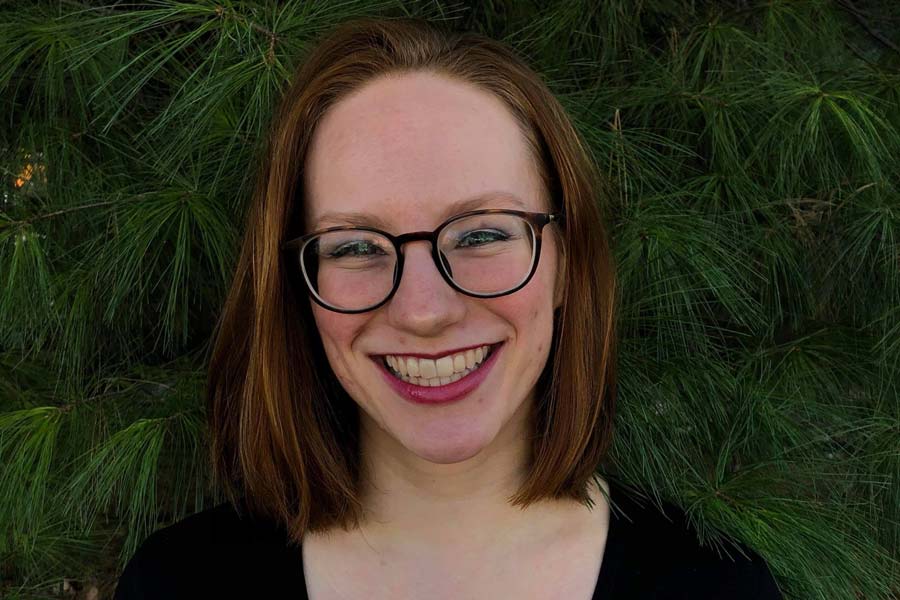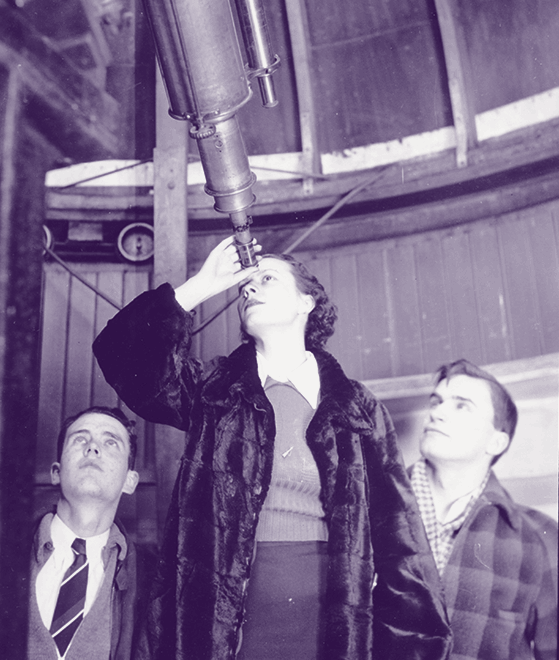

Zuri Peterson '20
Madison, Wisconsin
Major in Art History and Biology
Zuri worked on a post-baccalaureate project in the Special Collections and Archives at Seymour Library and is currently a software tester for Epic.
Why did you choose to major in museum studies?
I sort of found my way into museum studies through the classes I took and the places I went. I knew I was interested in art history, but I viewed museums more as neutral housing for the artwork until I got to Knox. Greg Gilbert’s museum studies classes and my study abroad classes in Florence and London impacted my understanding of museums themselves. The decisions about how and what gets displayed (or doesn’t get displayed) can completely shift our understanding of the work. These Knox experiences opened my eyes so that I became more critically aware of how the museum, curation, and artwork all come together to create a message or an understanding for the viewer. Considering artwork in a vacuum is insufficient for understanding its meaning. This is also exciting because it means that even centuries-old art is still constantly shifting and changing in the eyes of the viewer.
How do you use your art or art museum studies work at Knox in your personal life?
For me, art and art museums have been a passion that I constantly remain curious about. It seems like every day there is something else I discover or research; whether it is a painting in a TV show that I recognize from one of Greg's classes, a plaque that I see walking around Madison that I go home and research, or a comment that a friend makes that launches us into a larger discussion to learn more. I think I will always incorporate that into my life.
What was your experience in art museum studies classes and/or exhibit projects?
I took a couple of museum studies classes at Knox where I was able to work on the exhibit team. For these classes, everyone in the class is assigned to research and write up the item labels for a couple of works of art. Then, the exhibit team would take everyone’s item labels and begin the work of creating the actual exhibit.
The two times that I was a part of the team making the exhibit, we made an online exhibition. It was interesting to work on multiple online exhibits because, even within the few years between “Seeing America” and “Picturing Pandemics,” the technology had changed to give us much more flexibility and creativity with the design. In addition to technical changes, it was also exciting to see the changing focuses of various exhibits created by Knox students that reflected an interest in and commitment to using museum studies as a tool for social critique and justice.
Tell us a little about your post-baccalaureate experience.
For my post-bacc, I was able to do a lot of projects, both big and small. Day-to-day, I worked in the Special Collections and Archives, researching, cataloging, and writing about the artwork in the collection. It was exciting to learn something new every day, whether about the art or about how to work in an archive.
For some of my larger projects, I cataloged a collection of beautifully printed German botanical posters that had been forgotten in a drawer. I created a guide on the Special Collections and Archives website that outlines the major works in the collection in an effort to make it more accessible to students and faculty, and I curated a physical exhibit of scientific illustrations and plant pressings of local flowers. These works were done by two Knox biology students in the late 1920s and early 1930s, J. Louise Milgrim Prevar '33 and Marion Louise Palm Rosenberg '31. As a biology and art history double major, this project had a special personal connection for me as it allowed me to synthesize my areas of study, connect with the history of the College and its students, and highlight the achievements of women in the sciences and arts that are too often forgotten.
What resources did you utilize at Knox or in the community for your post-bacc (and perhaps other) projects?
The archives, special collections, and art collection are invaluable resources for the College and its students. When I was first working on “Seeing America,” I was able to walk into the library and study a Grant Wood print in person! The rich treasure trove of artwork, research, and photographs allowed me to connect with and appreciate Galesburg, Knox, and the deep history of all the people who have passed through these places. I am excited for the new museum studies program and the gallery on campus, and I hope that this allows other students to learn from the collection in the ways that I have.
What immersive experiences/internships supported your art museum studies focus?
When I studied abroad in Florence and London, I was able to live, breathe, and sleep art and museums. It was so exciting to be constantly surrounded by the places and artwork that I had spent years just seeing in books or on a screen in Greg Gilbert’s classes. When I was in London, I had a class where we would just go to a different museum every day and walk around for hours, learning about the history of the museum and the artwork inside. This was when I began to be aware of the power dynamics at play in museums, and I started to learn to recognize and challenge the narratives presented. I was also able to see the possibilities of museums to challenge these dynamics and to use art, curation, and public engagement to support social justice.
How did your post-bacc project (and your participation in art museum studies more generally) affect your professional aspirations?
Although I am not currently working in a museum field, art history, museum studies, and archival work remain areas that I am passionate about and hope to pursue one day. Working in Special Collections and Archives was such a valuable experience for me. I came to see how archives and working in small collections can be a wonderful intersection of community engagement, research, and physical care for art objects, and that continues to excite me. Who knows what the future will hold, but I know there will be art in it!

